You are here: Home1 / Technical information2 / Storage guidelines for elastomeric materials according to DIN 7716 and...

 The different faces of FKM
The different faces of FKM The shelf life of elastic materials is not unlimited. Sometimes we feel the need to keep elastomeric components for a long time to ensure its availability in case of an urgent technical service.
We highly recommended to follow the storage guidelines in accordance with DIN 7716 for products made of elastomeric materials to make sure that they maintain their initial properties.
Some highlights to follow to achieve the maximum shelf life:
For further details, please read DIN 7716 standard.
These storage guidelines are not exclusive to O-rings since they can also be used for any other products such as hydraulic seals, pneumatic seals or flat gaskets, among other. In the case of products manufactured with additional components, such as metals, it is advisable to check whether the metal is free of rust or any other observable defect.
Storage times for elastic materials are defined by ISO 2230 are as follows:
| Classification | Initial storage period without technical inspection | Extension storage period after technical inspection |
| Group A | 5 years | 2 years |
| Group B | 7 years | 3 years |
| Group C | 10 years | 5 years |
Group A of elastomers: BR; NR; IR; SBR; AU and EU.
Group B of elastomers: NBR; H-NBR; X-NBR; IIR; BIIR; CIIR; CR; ACM; CO and ECO.
Group C of elastomers: CM; CSM; EPM; EPDM; FKM; FFKM; Q; FQM; PMQ; PVMQ; MQ and VMQ.
Some considerations for the storage of elastomeric materials
The storage period of elastic materials can be extended after the time indicated in the table above if the product is subjected to a proper inspection. Similarly, the life of an elastomer material may be shorted before the stated storage times expire if stored incorrectly. In this sense, we refer to the recommendations of DIN 7716.
All these values should be taken with the utmost caution. Elastic materials derived from rubber (elastomers) need to have their optimum quality properties. This is especially relevant if they are to be used under harsh conditions, such as with aggressive chemicals, in demanding applications, in high or low temperature environments or under high pressures or vacuum systems.

 The different faces of FKM
The different faces of FKM 